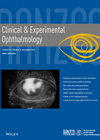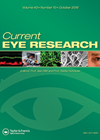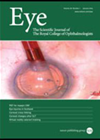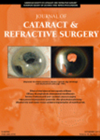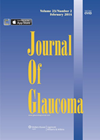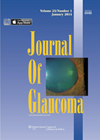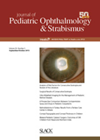
Journal Reviews archive for 2014
Pentacam vs. IOL Master keratometry measurement in IOL power calculations
The IOL Master measures only the anterior corneal curvature and estimates the total corneal power by assuming a fixed relationship between the anterior and posterior corneal surface. The Pentacam measures both the anterior and posterior corneal surface and therefore calculates...
Spectral domain OCT vs. confocal scanning laser ophthalmoscope in measuring RNFL thickness
The aim of this prospective study was to compare the retinal nerve fibre layer thickness (RNFL) measurements obtained from the Cirrus optical coherence tomography (spectral domain OCT) with the Heidelberg Retinal Tomograph 3 (HRT3, confocal scanning laser ophthalmoscope). Eighty-eight normal...
Topical doxycycline for corneal neovascularisation
Six eyes with corneal vascularisation were treated with 1% topical doxycycline, four times a day for three weeks. The patients were reviewed at various intervals over a period of one year. The eyes selected had neovascularisation secondary to a variety...
Avastin vs. Volon A for diabetic macular oedema
This prospective randomised interventional clinical trial compared 30 diabetic patients with macular oedema treated with either intravitreal injections of bevacizumab (Avastin) or triamcinolone (Volon A). One group initially received three injections of 2.5 mg Avastin in monthly intervals whilst the...
Latanoprost in the treatment of congenital glaucoma
The aim of this study was to investigate the glaucoma control of latanoprost therapy in primary congenital glaucoma (PCG) and assess the factors affecting long-term outcome. Eighty-one eyes of 44 patients with PCG and 42 eyes of 29 patients with...
Liquid adhesive bandage for clear corneal cataract incisions
This paper reports a prospective randomised controlled trial of patients undergoing routine phacoemulsification with a 2.75mm clear corneal incision and followed up for 14 days postoperatively. They evaluated wound edge closure, surgically induced astigmatism and foreign body sensation after use...
SLT short-term results
The aim of the study was to evaluate the risk of adverse effects and short-term results after 360 degrees selective laser trabeculoplasty (SLT) in glaucoma patients. The authors enrolled 64 eyes of 64 patients all who had poorly controlled primary...
Canaloplasty after failed trabeculectomy
The authors describe the technique of canaloplasty performed in five patients who had undergone previous trabeculectomy and under maximum tolerated medical therapy or insufficient intraocular pressure (IOP) control. Canaloplasty is described by the authors as “a nonperforating blebless technique derived...
A ciliary body tumour
The authors describe a case report of a 60-year-old woman found to have advanced angle closure glaucoma in her right eye and appositional closure of half of the left eye and no glaucoma. The patient had previously undergone two trabeculectomies...
Risk calculation variability over time in OHT
In this study the authors aimed to assess the variability of the well documented risk model from the Ocular Hypertension Treatment Study (OHTS) that identified higher intraocular pressure (IOP), older age, lower central corneal thickness (CCT), greater vertical cup-to-disc ratio...
RAPD in glaucoma screening
A study was conducted to investigate the relative afferent pupillary defect (RAPD) by swinging flashlight as a potentially useful screening test for glaucomatous optic neuropathy. The authors recruited 107 subjects with or without glaucoma from a clinic population. A medical...
Risk factors for consecutive XT
The authors report a retrospective study to investigate possible risk factors leading to consecutive exotropia development in patients who underwent two muscle strabismus surgery to achieve an initial alignment within 10PD. The exotropia group included 25 female and 22 males....

